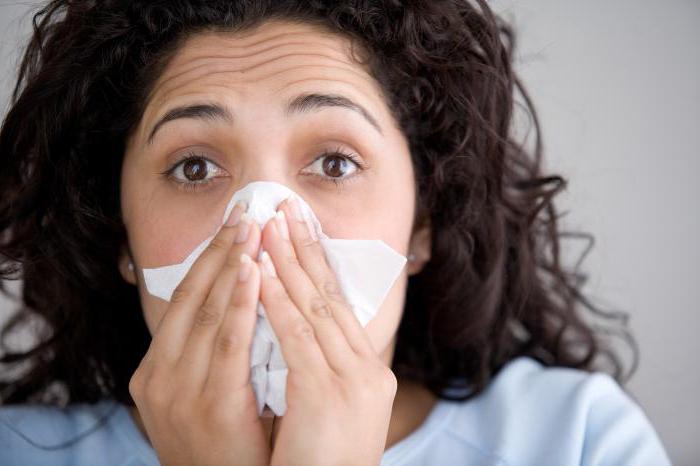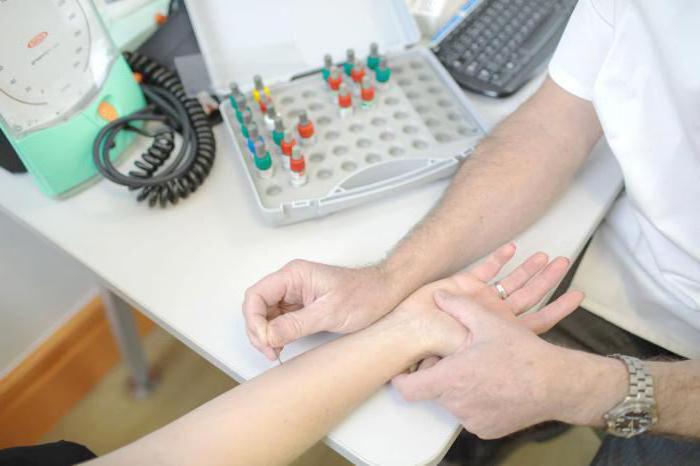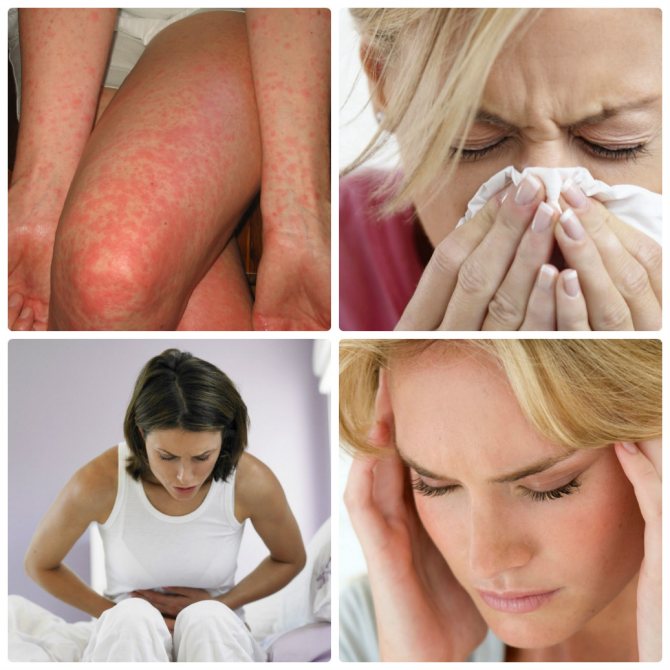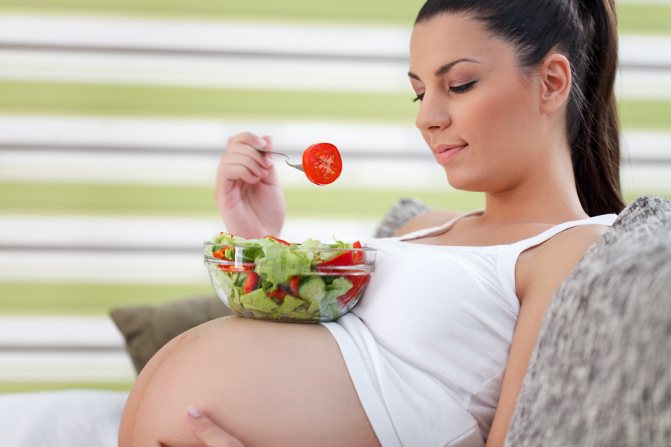One of the most common diseases on Earth is skin allergies: the spots itch, become inflamed and swell. Many people experience discomfort, burning and tearing eyes, sore nose and nasopharynx, attacks of nausea and dizziness, stomach cramps, swelling, irritability. The reasons for this reaction can be very different, but the main ones are: plant pollen, dust, citrus fruits or animal hair. However, various rashes and redness can occur as a result of a reaction to other substances that seem quite harmless at first glance. This could be synthetic threads in clothing, sun, cold, or foods such as fish, honey, or dairy products. Often a reaction occurs even to tomatoes. Allergy is an individual disease, so each person may have a different allergen, and, as a result, each person will have their own symptoms. So what is this disease that affects millions of people around the world? Let's try to understand what kind of disease this is and why it occurs.
What is an allergy?
An allergic reaction of the body can occur as a response of the immune system to the influence of any irritant (allergen). However, we are constantly exposed to hundreds of various factors, but the body does not react to them in any way. They do not cause any harm to health, so our body simply ignores them. Signs of allergies appear when the immune system perceives one of them as a threat and begins to defend against it. Sometimes our body’s defensive reaction can be so strong that its own organs and tissues suffer.
Most people who are allergic to tomatoes experience unpleasant symptoms after eating them. Therefore, most often such manifestations of hypersensitivity are classified as food allergies. The condition for its appearance is considered to be the response of the immune system to the influence of certain antigens - anthocyanin or lycopene. These are plant compounds found in red-burgundy vegetables, fruits and berries. However, there are cases when signs of allergies appear in response to various harmful chemical additives contained in plant products due to the fault of manufacturers.

Types of tomatoes
Tomatoes are originally wild plants. Their cultivation by humans has ultimately made it possible to obtain tasty, healthy and nutritious fruits when grown.
Currently, thanks to advances in breeding, hundreds of plant varieties are actively used.
Some of them are suitable for areas with a temperate climate, others grow only in the southern regions.
Conventionally, tomatoes can be divided into:
- Used exclusively for fresh consumption.
- Grown for pickling, canning, making tomato pastes and sauces.
Ripe tomatoes are not only red fruits. Orange and yellow vegetables are produced on an industrial scale; many gardeners grow black-colored fruits.

It has been proven that tomatoes with orange and yellow colors are much less likely to cause allergic reactions.
They are also ways to cleanse the intercellular space, which is considered the natural anti-allergenic property of the plant product.
When does an allergy occur?
The development of an allergy to tomatoes can be divided into three stages:
- At the initial stages of the development of allergic reactions, there is no obvious immune response of the system; the process of sensitization occurs - increasing sensitivity to the antigen.
- At the next stage, the functioning of mast cells, which are an important part of the immune system, is disrupted. Due to their destabilization, active substances that cause changes in body tissues - histamine and serotonin - enter the blood.
- External manifestations in the form of redness, itching, sneezing, nausea, abdominal pain and other symptoms are the last stage of the development of an allergy to tomatoes. What the immune system's response to an antigen looks like depends on the characteristics of the human body.
Tomatoes in baby food
To prevent a child from developing an allergy to tomatoes, this product should not be given to children under one year of age.
. This warning is due to the high acidity of the vegetable, which will negatively affect the baby’s stomach.
A small amount of juice or tomato puree can be given from ten months of age. First you need to give half a teaspoon, while observing the baby’s condition. If the body reacts normally to the product, then the dosage can be increased.
If eating a product causes digestive system disorders, then the vegetable should be excluded from the diet for up to a year or for a longer period.
Before serving the product fresh, it must be peeled and the seeds selected.

Only from the age of three can tomatoes be given to children without fear and in any form.
Who is susceptible to allergic reactions?
Hypersensitivity of the body to the effects of irritating antigens manifests itself in people who have a genetic predisposition to synthesize immunoglobulin E, the production of which takes a certain time.
The immune system perceives the substances contained in this vegetable as harmful and tries to get rid of them. The antibodies produced combine with foreign agents to form antigen complexes. This process stimulates the formation of antibodies and degranulation of mast cells of the immune system. The process of allergic manifestations begins.
Tomatoes have the ability to directly affect mast cells, a process called false tomato allergy. In this case, the symptoms will be the same as with true hypersensitivity, but without the manifestations of severe forms. The body's reaction will appear after consuming tomatoes in large quantities and will not be detected at all after eliminating them from the diet. However, a true allergy reminds itself of itself even with a slight ingestion of a vegetable that is part of a dish. False symptoms of a tomato allergy can be caused by taking certain medications that cause the production of histamine or serotonin in the blood.

Prevention
In order to avoid the unexpected occurrence of symptoms, you must adhere to the following simple rules:
- In catering establishments, you should always notify staff of your allergies in order to avoid adverse consequences for the body.
- Members of the nightshade family and other cross-allergens should be avoided.
- If adults or children are allergic to tomato juice, you can replace it with a higher quality one that does not contain foreign impurities. A good juice contains only tomato puree, salt, and water. However, you should try the drink with great caution and in very small quantities.
- When working with seedlings and tops in the beds, you should use protective clothing, gloves, and a respirator.
Symptoms and manifestations of reactions
Severe allergic symptoms may appear within an hour to an hour and a half after eating a tomato, or may occur within a few days. Typically, signs of the disease are expressed:
- From the intestinal tract. Pain in the abdomen, indigestion, diarrhea, nausea, vomiting, heartburn.
- On the skin. Itching, hives, eczema, swelling, and various spots can occur even if you are allergic to tomato pollen. Depending on the severity of the disease, skin irritation can be local or spread throughout the body.
- Irritation of mucous membranes. After eating tomatoes, many people begin to sneeze and cough, have a runny nose and increased lacrimation. This happens due to the synthesis of histamine, which leads to increased permeability of blood vessels. As a result, small vessels located in the nose and nasopharynx begin to rapidly lose fluid, which provokes its discharge from the eyes and nose. In extremely rare cases, eating a vegetable can cause anaphylactic shock, a fatal reaction of the body. In this case, there is an immediate development of swelling of the face, lips, eyes, and tongue. Breathing problems occur due to swelling of the airways. This process very often leads to death.
How a child might react
The rate of manifestation of a child's allergy to a mosquito bite is directly proportional to the degree of the immune response to the poisons that enter the body during the bite. Sometimes it's literally a matter of minutes.
A moderate reaction in a child to a mosquito bite gives the following symptoms:
- The bite site may hurt.
- The skin turns red, swells, thickens, and is very itchy.
- A rash may occur.
- The local temperature (where the mosquito bit) may rise.
These conditions are very often not dangerous to health; the bite does not entail serious consequences.
It happens that the skin itches for 24 hours, and the swelling goes away only after three to four days. But if children experience increased sensitivity to an insect bite, later mild reactions may give way to acute ones.
We invite you to familiarize yourself with the Tundra swan - Tundra swan
A severe allergy to mosquito bites in a child is manifested by such signs as:
- Blisters appear all over the body, indicating the presence of hives.
- The child becomes very lethargic and feels unwell.
- Blood pressure may drop and arrhythmia may occur.
- Tearfulness and allergic runny nose appear.
- Children may feel sick and dizzy.
- The skin turns pale and fever occurs.
- The child may begin to cough.
Doctors consider anaphylactic shock and angioedema to be the most serious manifestations of an allergy to a mosquito bite. In the second case, the subcutaneous tissue swells and the face enlarges.
In addition, disorders in the functioning of the gastrointestinal tract may occur. Such swelling does not pose a threat to life only when there is no swelling of the larynx.
Parents and their children should go to the doctor immediately as soon as such swelling begins to develop; there is no time to hesitate.
The development of anaphylactic shock can occur very quickly, within minutes. This condition is accompanied by itching, redness, and disruptions in the digestive system.
But the most terrible manifestation of an allergy to a mosquito bite is swelling of the larynx; children can lose consciousness and experience suffocation, which can be fatal.
The child should immediately be given a medicine that blocks histamine release and immediately taken to the hospital.
What parents should always do if even a minor allergy occurs after a mosquito bite: the child should take an anti-allergenic drug (Fenistil, Suprastin), then the parents should go with the child to a specialist, even if it seems to them that the reaction is weak.
It is very important to visit a specialist, since it is impossible to predict whether mild allergic symptoms will develop into danger for children’s health or even their lives.
Diagnostics
This hypersensitivity can have many different manifestations, so it is important to be aware of any symptoms of a tomato allergy. Do you experience excessive sweating after eating this vegetable, absent-mindedness or irritability, anxiety, increased salivation, runny nose or watery eyes? Or maybe the signs of allergies are of a different nature? If such characteristic symptoms are present, you should consult an allergist.

Be careful, tomatoes!
Kurgan residents are increasingly becoming hypersensitive to nightshades. "The Age of Allergies" This is how the World Health Organization declared the 21st century. Spring is a favorable season for many types of allergies. Some Kurgan residents have already encountered strange and painful rashes. The culprit is on the windowsill. But they would never think of him.
Work in the garden is still a long way off, but preparations for the summer season for gardeners began already in February. Everyone started sowing seedlings.
Floral and vegetable. And if growing the first for allergy sufferers is directly related to the manifestation of dangerous symptoms, hardly anyone would have thought about the second group of greens. We're talking about a tomato. One of the most cultivated vegetables in the world. And Trans-Ural gardeners cannot imagine their dacha without it. In autumn, no pickles, no marinades, no sauces.
Elena Filippova, chief allergist-immunologist of the Department of Health of the Kurgan Region: - Tomatoes can be considered from two positions: the fruit itself, and there is an allergy to it, although this is a rather rare type, and the tops.
A reaction to tomatoes is considered a type of food allergy. It is provoked by an antigen - anthocyanin or lycopene. There are often cases when the culprit is the chemicals and harmful substances that manufacturers use to process tomatoes.
The symptoms of such an allergy are a bit like poisoning: diarrhea, nausea, vomiting and abdominal pain. However, to this are added: runny nose, bronchospasm, conjunctivitis, swelling of the skin, and a drop in blood pressure. You need to see a doctor immediately. In addition to diet, proper medication will be prescribed. But it turns out that tomato seedlings pose no less of a danger to gardeners.
Attention! Elena Filippova, chief allergist-immunologist of the Department of Health of the Kurgan Region: - But this is not a true allergic reaction, it is a reaction to phytoncides. We all know that all plants emit phytoncides
From tomatoes we feel this when we touch their tops.
However, it contains toxic alkaloids. Simply put, the phytoncides released by tomatoes cause a toxic reaction in some people. The same as when touching nettles. Only in addition to the itching of the skin are added: watery eyes, runny nose, sneezing, swelling and rashes on the skin.
Elena Filippova, chief allergist-immunologist of the Department of Health of the Kurgan Region: - When gardeners come to me and ask, “how can I treat this?” - I say - the only thing is the exclusion of contact!
Taking antiallergic drugs will be ineffective here, that is, at some stage it will work and help, but if you continue to come into contact with this reagent, the drugs will be ineffective and the toxic reaction will grow.
We invite you to familiarize yourself with Which greenhouse is better - recommendations for choosing from
And the consequences can be the most dangerous. Without giving up growing seedlings and transferring them to greenhouses, entering them again can cause a person to lose consciousness, and swelling of the larynx can lead to death. This is the worst scenario. If you ignore the symptoms and refuse contact with tomatoes, the condition develops into hypersensitivity to all nightshades: bell peppers, hot peppers, eggplants and potatoes.
That is, such patients will have to give up farming. And this cannot be treated with medication. Again, this is not a true allergy, it is a toxic reaction. And as in the case of nettle, you will have to wait it out for the symptoms to go away.
By the way, toxic elements are also contained in the tops of cucumbers. According to doctors, in the summer it is not uncommon for Kurgan residents to complain of redness, strange rashes and prolonged itching after harvesting this vegetable.
Laboratory research
The main methods for determining the disease are blood tests and allergy tests. A study of blood composition gives the most accurate result for the presence of a reaction in the form of the synthesis of immunoglobulin E antibodies.
The test, carried out in the form of applications, also gives a certain result. To conduct it, a sample of a potentially dangerous product is applied to a special applicator and attached to the patient’s back. If inflammation appears on the skin within two days, it means that the vegetable actually causes an allergy. Sometimes skin prick tests are performed. A small amount of the potential allergen is injected under the skin. The appearance of any reactions indicates the presence of hypersensitivity to tomatoes or an allergy to tomato seedlings.
What does a tomato allergy look like?
Allergic manifestations can occur both after eating tomatoes and after physical interaction with tomatoes. Therefore, typical signs of increased sensitivity to the product are: swelling of the lips, blisters in the mouth and throat, and severe itching of the affected area.
In addition, there may be accompanying symptoms of an allergy to tomatoes:
- Vomiting.
- Upset stomach, diarrhea, flatulence, abdominal pain.
- Rash on the skin. It is usually localized in areas of interaction with the provocateur - in the mouth or on the hands. Redness, burning and painful itching of the damaged areas often appear.
- Inflammatory processes, swelling.
- Allergic rhinitis, frequent sneezing.
- Coughing, shortness of breath.
- Decreased blood pressure.
- Depressed state, lethargy.
- Headache, dizziness.
- The formation of flaky spots that cause an unbearable desire to scratch them. If not treated promptly, such rashes can transform into eczema.
So are tomatoes allergenic? Yes, but the interval for symptoms to appear usually ranges from a few minutes to 2 days. The most severe form of the disease is considered to be angioedema and anaphylaxis, which can pose a threat to the life of the victim.
On a note! Gargling with clean water will help get rid of swelling in the mouth; if your throat is affected, it is recommended to drink a glass of water.

The child has
Tomato intolerance in children is quite common, so it is recommended to introduce the product into the menu no earlier than the baby turns 1 year old. The fact is that a child’s digestive system is not perfect and food may not be completely digested.
Symptoms of a tomato allergy in children are similar to adults, but can be much more severe. Children complain of abdominal pain, nausea and indigestion. Sometimes cough, runny nose and constant sneezing are added to the main symptoms. Also, due to an allergy to tomatoes, the mother may notice peeling of the skin on the cheeks, the appearance of red spots on the hands and around the child’s lips. At the same time, ripe tomatoes provoke exacerbation much more often than unripe vegetables.
When offering a product to your baby for the first time, you should peel the tomato skin, which contains most of the allergic elements. If by the age of 3 the child is not allergic to tomatoes, you can add vegetables prepared in any form to the food, including tomato paste, soups or sauces. If hypersensitivity to the product occurs, tomatoes and its derivatives are prohibited until the symptoms of the disease subside. After a while, you can try introducing tomatoes into the menu again.
During pregnancy

a woman’s hormonal background changes greatly, so an allergy to tomatoes can occur even in mothers who have not previously experienced such disorders. Eating vegetables is most dangerous in the third trimester, since later on the child may also develop signs of food intolerance.
Can a baby be allergic to tomatoes? Yes, most often this happens in two cases: when introducing tomato juice, a slice of the tomato itself, or if the new mother feasted on juicy vegetables the day before. Symptoms usually appear in the form of a small rash on the child’s face and buttocks, as well as peeling areas of the skin. In such a situation, a nursing woman is advised to exclude the allergenic product completely.
Also, the expectant mother should be as careful as possible when preparing planting material and working in summer cottages, since there is a considerable likelihood of an allergy to tomato seedlings.
How to treat the disease?
The best way to combat allergy symptoms is to follow a special diet. Often people resort to medication. These can be antihistamines or special creams and ointments.
Another way to combat allergies is to increase the protective properties of the immune system. Enriching your diet with foods containing large amounts of antioxidants and beneficial nutrients helps strengthen your immune system. A strong and healthy body is able to resist the effects of histamine, which, in turn, helps prevent signs of tomato allergy.

Diagnosis of tomato intolerance and treatment methods
When parents bring their child to the doctor, the specialist will first establish an accurate diagnosis using laboratory tests, identify the allergen, and then write a treatment regimen for the allergy, usually a comprehensive one.
The most common method for diagnosing tomato allergies is a blood test, which determines the level of immunoglobulin E in it.
With a high amount of this substance, we can talk about an allergy to tomatoes. The specialist can also prescribe skin tests for children who are already seven years old.
The doctor will definitely prescribe a hypoallergenic diet for the child, from which tomatoes and their derivatives (juice, ketchup, sauce, tomato paste, etc.) will be excluded.
Vegetables and fruits colored red are also excluded. A specialist may advise parents to give their children calcium gluconate, which can bind dangerous substances for subsequent removal from the body.
- Antihistamines are required in the therapeutic course to quickly reduce allergy symptoms. The doctor will select a new generation of antihistamines that do not give side effects.
- To establish normal functioning of the gastrointestinal tract, enterosorbents are prescribed. They will quickly remove the allergen from the child’s body.
- To help affected skin with allergies to tomatoes, a specialist will recommend medicinal ointments and gels.
- To treat allergic rhinitis or conjunctivitis, local medications are suitable: nasal sprays, eye drops.
- Folk remedies can be included in the treatment complex. These are usually infusions and decoctions of various herbs: string, valerian, oregano, chamomile, licorice root and a number of others. The doctor will advise which herbs can be used to treat your child's allergies. Shilajit is also popular.
Therapy is carried out exclusively as prescribed by a specialist. The doctor uses hormonal drugs in the therapeutic course very rarely, only in very severe forms of the disease.

When to start introducing tomatoes into children's diets
Tomatoes are not given to babies before 10 months of age. Next, you can start with products such as tomato juice or puree, and with the smallest doses.
Parents need to carefully monitor whether the child has allergic signs. If there is no allergy, the amount of juice or puree can be increased. And if primary allergic symptoms appear, these products are temporarily removed from the children's menu.
But you can return to them after two or three months and again monitor the baby’s reaction. A three-year-old child can freely eat these vegetables in any form, unless, of course, he is allergic to tomatoes.
Antihistamines and allergy tablets
The list of medications used for various forms of allergic reactions is quite wide. The use of special ointments will help relieve unpleasant symptoms on the skin: Fenistil, Vundehil, Skin-Cap, Loratadine and other creams.
Doctors usually recommend the following oral medications: Dimebon, Dimentinen, Diphihydramine or Doxylamine, Kestin, Clemastine, Mebhydrolin, Loratadine and Meclozine. They may prescribe Promethazine, Sehifenadine and Telfast, Fexofenadine, Cetirizine, Xifenadine and Cyproheptadine. However, all these drugs can only be used as prescribed by a doctor. The duration of the treatment course is 2-3 weeks.
Glucocorticoid drugs that have anti-inflammatory properties are also prescribed - Hydrocortisone, Betamethasone, Triamcinolone or Fluticasone. In addition, the doctor may recommend Prednisolone, Dexamethasone or Fluocinolone Acetonide. They are prescribed for severe forms of allergies, and in a short course, otherwise they can cause serious complications.
You can add sorbents to the list of allergy tablets - “Attapulgite”, “Calcium carbonate”, “Hydrolytic lignin”, “Lactofiltrum” or “Filtrum”, “Enterosgel” and “Eubicor”.
In case of severe manifestations of allergic reactions with the likelihood of anaphylaxis, Epinephrine is prescribed intramuscularly. To relieve the symptoms of bronchial asthma, bronchodilators are prescribed. For hypersensitivity with symptoms of diarrhea, Attapulgite or Hydrolyzed Lignin is used, and Meclozin is used against vomiting.

Why does the body react negatively?
Intolerance may occur to:
- fresh vegetables;
- their processed products (juice, ketchups, canned vegetables, etc.);
- seedlings and pollen.
The body does not perceive some compounds found in vegetables and recognizes them as foreign. Excessive production of histamine and immunoglobulin E begins. As a result, allergic inflammation occurs with increased capillary permeability. There is irritation of the walls of the stomach, intestines, and skin receptors. A rash, swelling, itching, etc. appear.
They are present in the pulp, seeds, and skin. In total, there are more than 15 potentially dangerous compounds for allergy sufferers.
Allergens that most often cause intolerance:
- anthocyanin and lycopene are plant glycosides. The rich red color of tomatoes is the result of their increased quantity;
- profilin (a protein that mainly provokes cross-reactions);
- beta-fructofuranosidase;
- Luc e Z – protein that can withstand heat treatment;
- Tomatine is an alkaloid that is contained in all green parts of the plant - unripe fruits, leaves, stems. It is the reason why contact allergies to tomato seedlings appear during planting and care. During the flowering period, the symptoms intensify as the irritant settles on the mucous membranes of the nose, eyes, and mouth.
Factors that increase the risk of intolerance:
- hereditary predisposition;
- excessive consumption of vegetables;
- use of pesticides and chemicals in cultivation;
- processing of tomatoes with various compositions for “marketable” appearance and long-term storage. An example would be vegetables from China. They look perfect, but they often provoke hypersensitivity;
- adding preservatives, dyes, flavor enhancers to juice and vegetable preparations;
- chronic pathologies of the digestive system;
- decreased immunity due to previous or existing diseases;
Pregnancy can also be a provoking factor. The activity of all body systems changes, and a woman may become allergic to tomatoes, even if such signs were not observed before. The third trimester is especially dangerous, as intolerance can be passed on to the unborn baby. The reaction can also occur in a baby, even if the product itself was not given to him, but the nursing mother ate the vegetable before. Rashes are usually observed on the baby’s cheeks and buttocks. Then, during the feeding period, it is necessary to avoid tomatoes in any form.
With pseudoallergy, characteristic signs of intolerance are observed, but the level of histamine and immunoglobulin E is not increased. The body’s false response is caused not by the stimulus, but by side factors. Most often this is excessive consumption of the product, especially by children. For the development of a true reaction, a small piece is enough.
The main components of tomato that cause allergies are anthocyanin or lycopene. Allergists also note that its appearance is also influenced by the color of the vegetable. The body perceives the coloring pigment as a foreign protein. Also, the appearance of allergic symptoms can be caused by substances with which fruits are processed during the growing process and for the purpose of further storage. The immune system perceives them as dangerous and harmful to health elements.
It is important to note that sometimes tomatoes can cause a false allergy. The symptoms will be similar to the body's actual reaction, but the tests will show a negative result. Its main features include:
- It most often appears after eating a large number of tomatoes. Only one lobe can provoke a real reaction in the body.
- By eliminating the vegetable, the symptoms of the disease disappear. Subsequent introduction of tomatoes into food does not affect well-being.
- Sometimes it occurs while taking certain medications. Therefore, during treatment you should avoid vegetables with red pigment.
A real allergy can appear to seedlings, tomato juice, or the smell of the plant. So, when inhaling its aroma, a rash and redness may appear on the skin.
Alternative medicine
In folk medicine, there are many ways to combat allergy symptoms. Decoctions of medicinal herbs are widely used due to their excellent therapeutic effect and safety. However, even taking them should begin with a consultation with an allergist.
There are many recipes for preparing medicinal tinctures. Here are just a few of them, the most popular among the people.
For example, to prepare a decoction of valerian root, string, thyme, oregano, violet leaves, nettle, chamomile, licorice root and horsetail herb. Take 2 tbsp. spoons of crushed herbs, brew them in half a liter of hot water and boil the decoction for 5 minutes. After this, it is filtered, cooled and consumed 4 times a day, half a glass.
In order to remove allergens from the body, there is such a recipe in folk medicine.
Take 1 tbsp. a spoonful of buckthorn bark, licorice root, burdock root, dandelion and fennel. The herbs are crushed, mixed and 5 tablespoons are placed in a thermos. Pour boiling water over and leave for 12 hours. After which the infusion is filtered and consumed 30 minutes before meals, half a glass.
Basics of treating the disease
The disease is treated in the same ways as other types of food allergies. During this period of time, you should take only those medications prescribed by doctors. You should not self-medicate.
Medications
During the diet, tomatoes and foods that contain them should be excluded from the diet. Often, after the necessary research has been carried out, doctors prescribe the following medications:
- Antihistamines. They relieve swelling, itching and cramps, and also help prevent bronchospasm.
- Glucocorticoids. They have a strong immunoregulatory effect.
- Epinephrine. Used in cases of suspected anaphylactic shock.
- Bronchodilator. Eliminates the manifestation of bronchial asthma.
- Antidiarrheal and antiemetic drugs.
- Corticosteroid hormones.
- Serotonergic agents.
- Sorbents. Used to accelerate the removal of allergens from the body.
- Preparations for desensitization of the body. Helps cope with increased sensitivity of the body.
The effect of anti-allergy medications depends entirely on how correctly an integrated approach to treatment was chosen. It is worth noting that taking medications alone does not give good results. Doctors advise combining drug treatment with folk remedies.
Diet
Treatment of any type of allergy consists of eliminating the product that is dangerous for allergy sufferers. You should avoid tomato pastes, sauces, and ketchups. If you buy semi-finished products, be sure to look at the composition, because even a small portion of a product that causes allergies can provoke a violent reaction in the body.









